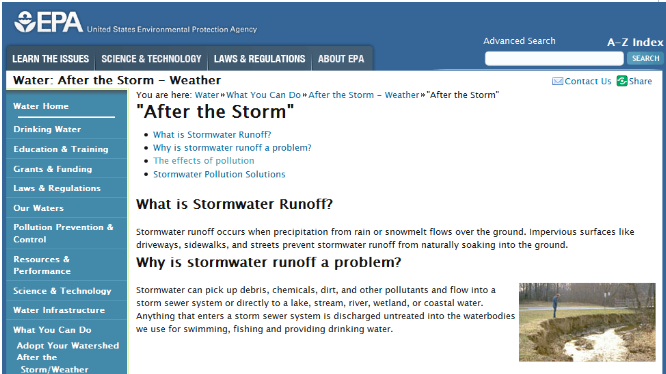When it comes to absorbing stormwater, the best natural absorbers are forests that have lots of trees and soil for water to seep through. Stormwater just flows down under the soil and rocks and joins in with groundwater, providing water reserves in times of drought. However, with paved roads and sidewalks, putting a forest smack in the middle of the city or a suburban area isn’t really feasible.

The main problem with rainwater is that it can easily collect and create pools and puddles on the ground since most of the surfaces in urban areas aren’t as permeable as soil, sand, or rocks. Hence, drainage systems are designed to let the runoff flow off the road and into the pipes. Usually these pipes would lead to an off-site location, but even this could cause problems.
According to the U.S. Environmental Protection Agency:
“Stormwater can pick up debris, chemicals, and other pollutants, and flow into a storm sewer system or directly to a lake, stream, river, wetland, or coastal water. Anything that enters a storm sewer system is discharged untreated into the bodies of water we use for swimming, fishing and drinking”.
Pollutants have a direct effect to the environment, and at the same time, stormwater runoff can’t be disregarded and needs to be managed. According to the EPA, one way to help minimize pollutants in storm runoff would be to clean up what you can before it starts raining. Clean up pet waste, trash, oil, fertilizers, pesticides, and other harmful elements and dispose of them properly.
Aside from cleaning, finding efficient and effective storm water solutions that will help clean runoff as it flows would be of great help. For instance, stormwater systems like StormChambers by HydroLogic Solutions, Inc. can be constructed or retrofitted around different areas where water might pool.
Stormwater management systems are designed to help drain water off the roads and sidewalks and prevent flooding as well as help catch sediments and pollutants that the runoff might bring. Ways to treat stormwater could also be installed so that water can be filtered once more as it flows out of the system.
Although far from perfect, the various stormwater solutions mentioned above can definitely help minimize the environmental impact of stormwater runoff in urban areas. To help in management and operation, the EPA also recognizes such solutions and gives regulation guidelines for stormwater management.
(Article Excerpt and Image from After the Storm, EPA.gov)





